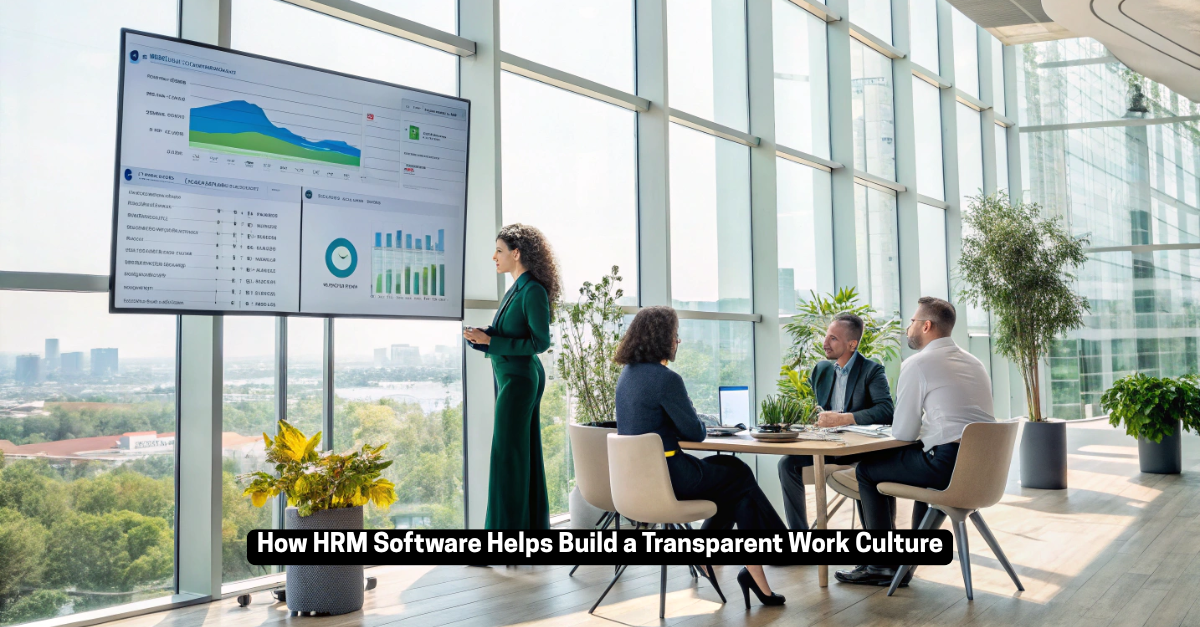Transparency is not just a buzzword in today’s workplace—it’s a competitive edge. Your employees of today demand transparency, fairness, and clear communication. And although company culture does come into play, the correct HRM (Human Resource Management) software can make transparency a reality across all levels of your organization.
From performance reviews to payroll processing, HRM software brings visibility, consistency, and trust into the core of workplace operations. In this blog, we’ll explore exactly how HRM software promotes a transparent work culture and why it’s crucial for long-term employee satisfaction and organizational growth.
1. Grasping the Requirement for Transparency
Let us first see why transparency is important, before getting into the technology.
A transparent working culture promotes:
- Open communication between management and employees
- Accountability in decision-making
- Clear expectations and feedback
- Fair rewards and performance review
But making this happen is easier said than done—particularly when HR processes are being done manually or variably. Which is where HRM software comes as a transformational force.
-
Real-Time Attendance and Leave Recording
Manual attendance reports tend to result in controversies, favoritism allegations, or confusion. HRM solutions, on the other hand, provide real-time, automated attendance recording—via biometric integrations, web-based check-ins, or GPS-activated mobile apps.
Consequently:
- Employees are well aware of their position on attendance or leave balances
- Managers have access to team availability at any given time
- Leave requests are handled transparently with automated workflows and traceable approval chains
This minimizes bias and creates a reciprocal trust between the employees and the management.
-
Transparent Performance Management
One of the most effective areas is probably performance management. The old-fashioned methods of appraisal are usually ridden with subjectivity and ambiguity. Contemporary HRM software provides:
- Well-defined KPIs (Key Performance Indicators)
- Regular feedback and check-in options
- Real-time dashboards for tracking progress
- 360-degree performance appraisals
Since everyone has visibility into what’s required and how they’re doing, performance reviews feel more objective. Furthermore, high-performing staff members are appropriately rewarded—building morale as well as trust.
-
Organized Communication Channels
Open communication is central to an open culture. Luckily, HRM systems allow organized, traceable dialogue among employees, managers, and HR.
Some provide:
- Chat within the app for HR-related questions
- Employee feedback websites
- Redressal mechanisms for grievances
- Survey and polling tools
It makes the employees feel comfortable sharing concerns or ideas without fear—knowing their feedback gets documented, heard, and actionable.
Moreover, leadership teams get data-driven insights from this feedback, and they can make data-informed cultural changes.
-
Transparent Payroll and Compensation
Transparency is also essential in payroll and compensation. Delays, errors, or ambiguity can cause immense harm to trust.
HRM software guarantees:
- Automated salary processing with accurate calculations
- Payslips on time
- Transparent detailing of bonus, deductions, or benefits
- Integration with statutory compliance (PF, TDS, ESI, etc.)
Additionally, employees can monitor their reimbursement claims and salary history in real-time, which erases the “guesswork” or the necessity of having to inquire with HR for each item.
-
Role-Based Access and Responsibility
HRM systems give role-based access—only authorized staff can carry out specific activities or see sensitive information.
Why is this significant?
Because it:
- Prevents abuse of power
- Maintains audit trails for choices (e.g., why a leave was refused, who sanctioned a bonus, etc.)
- Holds people accountable throughout hierarchies
So, all activity in the system is traceable—establishing a culture in which everyone is responsible for what they decide.
-
Encourages Equality and Lowers Bias
Bias, whether intentional or unintentional, is a biggest enemy of transparency. HRM software makes it easier to play fair by automating tasks vulnerable to human bias.
Some examples include:
- Blind recruitment resume screening
- Standardized performance appraisals
- Consistent leave approval processes
Since the system has pre-established rules, everybody is treated fairly irrespective of their background or connections within the firm.
-
Transparent Learning and Development Opportunities
Finally, HRM software may also come with Learning Management System (LMS) integrations or modules that ensure open growth trajectories.
Workers are able to:
- View training opportunities
- Enroll in learning tracks by skills
- Monitor certifications and upskilling
This keeps growth opportunities open for everyone to see and access instead of being limited to select employees handpicked by the management. In the long run, this instills a meritocracy and developmental culture.
Final Thoughts:
Transparency Isn’t a Choice—It’s a Competitive Advantage
To put it simply, establishing a transparent culture at work isn’t good HR practice—it’s business strategy. In an age where talent prioritizes trust, clarity, and open communication, firms that practice transparency via HRM software are well set to hold onto talent and grow successfully.
By automating and digitizing HR processes, organizations eliminate ambiguity and foster a culture of honesty, accountability, and mutual respect.
Ready to Build a Transparent Workplace?
If you’re still relying on spreadsheets, manual forms, or isolated tools, it’s time to upgrade. Explore how ZestNexus—a next-generation HRM platform—can help your organization become more transparent, efficient, and people-first.
Empower your team with the clarity they deserve—because transparency begins with the right tools.



